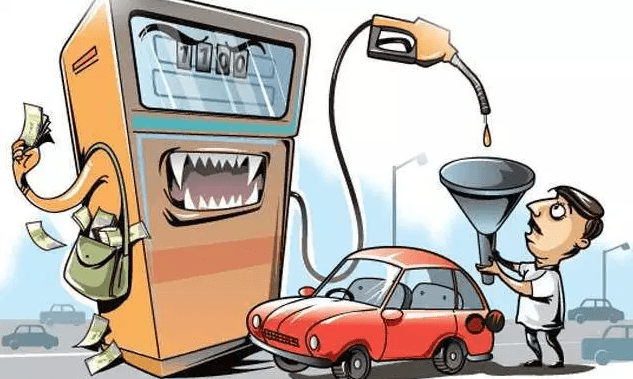The ever-rising cost of fuel has forced many car owners to seek genuine ways of cutting down the amount of fuel used on a daily basis. Some have decided to ration their daily itinerary to reduce cost when possible, while those whose livelihoods depend on their mobility have resorted to using public transport to cut cost.
What if we told you some secrets to driving your car with minimum fuel consumption? Would it help? If your answer is yes, follow us as we take a look at ways you can save fuel when driving.
1. Accelerate Gently
Sometimes, you should neglect the “pedal to the metal” advice and do a slow and relaxed acceleration (0 to 20 km/h in five seconds). It boosts fuel efficiency by 10%. As for speeding and burning the oil fiercely, it has a way of making you look like an 18-year-old behind the wheel and is definitely no longer charming when you consider the tenents of safe driving.
2. Maintain a Steady Speed and Keep your Distance
When you tailgate (drive too closely behind another vehicle), you accelerate and decelerate needlessly, and this reduces the fuel efficiency of your car. Keep a steady speed by staying a few seconds back and preserving your fuel.
3. Go Easy on the Brakes
Before slowing down, you should scan ahead to see the traffic lights or the distance of the vehicles ahead of you. This will determine when you will release the accelerator.
Experts believe that this procedure stops the fuel supply and increases your fuel efficiency by 2%. Restrict slamming of the brakes to emergency situations alone.

4. Use the AC Only When Necessary
Do you automatically put on the AC as soon as you step into the car? If the weather is 25C and you run the air conditioning at 25C, your fuel efficiency is affected immensely and drops by 12% for no benefit.
Always set the AC to a reasonable temperature and only when it is needed to cool the car below the outside temperature.
5. Don’t Warm Up or Leave Your Running Engine Idle
It is a waste of fuel to let the engine run when you are not driving. This is even more so as today’s passenger cars don’t need warming up unless the temperature falls below 20C. It is advisable to start your car slowly as soon as you’ve started the car.
It is better to sort out everything you need to do before starting the engine; set up your hands-free, GPS, load your luggage or whatever you need to do but don’t just leave the engine running while doing any of these things as it could lead to meaningless waste of fuel.
Note: If you are already driving, and you need to quickly load something into your car while on the road, don’t turn the engine off as it turns off safety features like airbags unless you have an idling-prevention system fitted in your car.
6. Avoid Traffic Congestion by Planning Your Trip
You can avoid traffic congestion by listening in to traffic news or checking for traffic congestion using Google maps or Waze. Avoiding traffic and using your GPS to get the quickest route to your destination saves you both fuel and your sanity.
7. Keep Your Tyres in Good Condition
Ensure your tyres are in perfect condition always to ensure a smooth ride. This can improve your fuel efficiency by up to 4%. Just as you have to watch your tyres, you also need to monitor the engine oil, oil filters and air cleaner elements to avoid fuel drain.
8. Don’t Carry Unnecessary Weight
It is a well-known fact that carrying an unnecessary 100 kilos causes a 3% loss in fuel efficiency. If you can do away with a particular weight, gladly do so but this doesn’t mean you should become reluctant to give your friends or colleagues a free ride, especially when they request for one.
9. Learn to Read Gauges
A number of modern cars are fitted with onboard equipment that monitors fuel efficiency. If you possess these cars, watch the information and observe how your driving behaviour and traffic conditions affect fuel consumption.
10. Use Cruise Control on the Highways
Cruise control means going on a constant velocity, without acceleration. When there is no acceleration, the engine has a reduced workload, therefore less fuel is used.
Your cruise control should be at the speed limit because 55 miles per hour is the perfect speed for maximum fuel efficiency.
